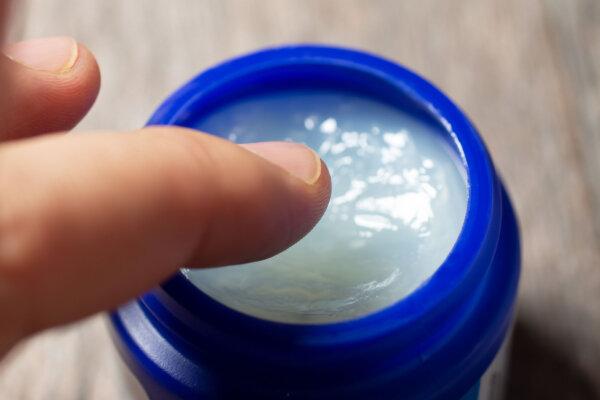Clear the Way: 5 Time-Honored Remedies for Sinus Congestion Relief
Traditional medicine provides reliable herbal and natural remedies that have proven effective through both time and scientific examination.
Growing up in Germany, my mother would always turn to a variety of household remedies whenever I got sick. It wasn’t uncommon for me to find myself sporting a hot, cooked, and mashed potato wrapped in a kitchen towel on my head. This remedy aimed to soothe sore throats, bronchitis, and earaches, and surprisingly, it did help.
I must commend my mother—her technique worked and remains popular in Germany.
During the cold and flu season, millions look for relief from nasal congestion, facial discomfort, headaches, and sore throats. While many opt for over-the-counter medications like Sudafed and Mucinex, natural remedies such as oil rubs, saline rinses, and herbal steam baths serve as effective alternatives.
1. Soothing Chamomile Steam Bath
One beloved home remedy passed down through generations is the hot chamomile steam bath.
By breathing over a pot of boiled water mixed with a handful of dried chamomile flowers—while covering my head with a towel to create a sauna-like effect—I found it beneficial.
After grumbling to my mother about this ‘torture,’ I emerged ten minutes later, my face flushed, drenched in sweat, and with a running nose—Mission Accomplished—mucus was flowing freely.
Upon moving to America with young kids, I had to defend these traditional family practices against my skeptical American husband, who found them peculiar.
Twenty-five years later, I’m passing on those same remedies to my grandchildren. My husband has now come to appreciate traditional remedies, whether from my homeland or other well-established practices like Ayurveda (the ancient Indian healing system), traditional Chinese medicine, and more.
Scientific Validation of Effectiveness
Previously, we relied solely on the wisdom of our mothers and grandmothers. Today, we can benefit from scientific research, although funding for traditional medicine is often limited. As a result, studies on these long-held healing practices tend to be scarce or originate from distant lands.
Fortunately, scientific inquiry has finally caught up with the time-honored chamomile steam bath.
While all were initially treated with a steroidal spray, Group A received an “isotonic seawater spray infused with chamomile liquid extract.” Groups B and C received isotonic seawater but differed in their administration method (spray versus nasal irrigation), and Group D only had the steroid treatment.
Researchers measured the time it took for nasal cavities to clear, finding that Group A had a statistically significant faster “nasal mucociliary clearance time,” suggesting that inhaling chamomile aid in easing congestion more quickly. Therefore, chamomile extract was concluded to be “a promising alternative treatment option.”
How to Prepare a Chamomile Steam Bath
- Fill a medium-sized pot halfway with water and bring it to a boil. Add a handful of dried chamomile flowers.
- Using a large bath towel, cover your head and create a dome around the pot. Inhale the herbal steam through your nose and exhale through your mouth for about 10 minutes, taking short breaks if necessary.
- Adjust the temperature by lifting the towel slightly to allow cooler air to enter.

goodbishop/Shutterstock
2. Ayurvedic Nose Oil
Another personal favorite, this time not linked to my childhood, is the application of nose oil. Rooted in Ayurvedic tradition, nasya oil is utilized to lubricate nasal passages and mucous membranes.
The respiratory tract, bronchi, stomach, intestines, and other organs contain mucosa, and its primary roles are lubrication and preventative protection against abrasions—specifically, maintaining nasal moisture.
This moisture is crucial because dry tissues compromise the immune system’s effectiveness. Dryness can lead to discomfort, irritation, increased infection risks, and, if the mucosal layers are dry and cracked, they allow pathogens like viruses, bacteria, and fungi to infiltrate.
Supporting Research on Ayurvedic Practices
Research conducted in 2023 and published in the Journal of Ayurveda and Integrative Medicine explored the effects of sesame oil-based Anu taila (Ayurvedic nose oil) as a “biological mask” to ward off respiratory infections like COVID-19.
While researchers did not dissuade the use of physical masks, they indicated that “transnasal application of medicated oils like A. taila or pure sesame oil would provide supplementary and effective nasopharyngeal protection.”
Personally, I find Ayurvedic nose oil invaluable for air travel. The cabin air seems to dry out my nasal passages, so I apply a drop or two of nasya oil in each nostril after boarding the flight. Remarkably, I have never contracted an infection during flights, even on long international journeys.

megaflopp/Shutterstock
3. Saline Nasal Rinses
Continuing the Ayurvedic tradition, one familiar to many in the West is nasal saline rinses, which offer another gentle remedy for congestion.

Zaruna/Shutterstock
How to Perform a Nasal Rinse
- Use 8 ounces of warm sterilized or distilled water, ensuring it’s lukewarm so that the salt dissolves effectively.
- Mix in 1 teaspoon of salt, ensuring it is free of iodine and additives, and stir until fully dissolved.
- Utilize a neti pot or another nasal rinsing device, allowing the saline solution to flow through one nostril and exit from the other. This can be repeated up to three times a day, particularly during heavy congestion.
4. Herbal Rub
Aromatic chest rubs like Vicks VapoRub are popular for easing congestion. By blending herbal essential oils into a salve base, a natural alternative can be created that alleviates nasal irritation, stuffed sinuses, and chest congestion. Depending on the chosen herb, it can assist in opening up tight lungs and respiratory pathways.
Basic Salve Recipe
- 120 grams of carrier oil (such as almond, avocado, grapeseed, or olive oil)
- 40 grams of cocoa butter (you can substitute with Shea butter, beeswax, or lanolin; bear in mind that beeswax may increase the salve’s viscosity)
Instructions
- In a glass or metal container, melt the oil and butter or wax using the water bath method, typically melting at 120–140 degrees F.
- To address sinus congestion, add a few drops of an essential oil blend or a single oil of your choice, like eucalyptus, pine, cypress, balsam fir, black spruce, rosemary, or peppermint. Organic menthol crystals can also be included.
- Pour the mixture into small amber glass containers and allow it to set overnight with the lid off, sealing it only after it has completely cooled.

The Image Party/Shutterstock
5. Preventative Measures
Given the prevalence of respiratory infections and nasal congestion, especially during the colder months, it’s crucial to reflect on potential underlying causes for these symptoms.
What might be causing the nasal congestion?
This is particularly relevant if symptoms are persistent or frequently recur. It could be a common cold, a viral or bacterial infection.
Triggers might also stem from structural issues like a deviated septum or nasal polyps.
Moreover, environmental irritants, molds, allergies, dry air, or hormonal fluctuations might also irritate nasal passages. The overuse of decongestants can even lead to increased nasal congestion.
Could dairy sensitivity be a factor?
An important consideration is whether sensitivity to dairy might contribute to the issue. Despite common claims of no link between dairy consumption and mucus production, my personal experiences suggest otherwise.
Previously, I endured 3 to 4 significant sinus infections annually and tried various treatments, including Flonase, Sudafed, and numerous other decongestants, all without success. My son dealt with recurrent ear infections and had ear tubes placed for drainage, as well as multiple antibiotic courses in his early years. It wasn’t until an ENT specialist recommended a dairy-free diet that our family saw relief from upper respiratory infections.
Why is there a dispute?
The most informative insight that research cannot provide may come from self-reflection.
Conducting a Personal Experiment
Consider trying a dairy-free diet for a minimum of four weeks. Eliminate all dairy items, such as milk, cheese, yogurt, sour cream, heavy cream, and cottage cheese.
Though challenging, if you do have dairy sensitivity, you will likely notice changes after this four-week period.
After this period, gradually reintroduce dairy products, keeping track of any symptom changes. Take on the role of a detective, and maintaining a food-symptom diary can aid in recognizing your body’s responses.





